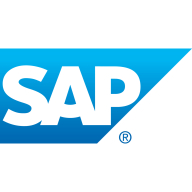

Actian PSQL and SAP HANA are two competitive products in the database market. While Actian PSQL is preferred for its affordability and reliable performance, SAP HANA is notable for its advanced features that justify a higher price point.
Features: Actian PSQL provides robust scalability, ease of use, and compatibility with existing applications, ensuring seamless integration for businesses. SAP HANA offers real-time analytics and advanced data processing capabilities, excelling in situations requiring high-speed and complex data transactions. A standout feature of SAP HANA is its efficient handling of complex analytical workloads.
Ease of Deployment and Customer Service: Actian PSQL is recognized for its straightforward deployment and strong customer support, minimizing resource requirements. Alternatively, SAP HANA offers comprehensive support services but may present a more challenging deployment due to its complexity and the expertise needed for optimal use.
Pricing and ROI: Actian PSQL is valued for its budget-friendly pricing, promising a quicker ROI for smaller to mid-sized implementations. SAP HANA's higher initial costs are balanced by its capacity to deliver significant long-term returns, particularly in extensive data analysis scenarios. This pricing leads Actian PSQL to appeal more to cost-conscious organizations, whereas SAP HANA attracts enterprises seeking significant capabilities and returns.
| Product | Market Share (%) |
|---|---|
| SAP HANA | 8.8% |
| Actian PSQL | 1.3% |
| Other | 89.9% |


| Company Size | Count |
|---|---|
| Small Business | 26 |
| Midsize Enterprise | 11 |
| Large Enterprise | 61 |
SAP HANA, also known as SAP High-performance Analytics Appliance, is a multi-model database that stores data in its memory, allowing users to avoid disk storage. The product combines its robust database with services for creating applications. SAP HANA is faster than other database management systems (DBMS) because it stores data in column-based tables in main memory and brings online analytical processing (OLAP) and online transaction processing (OLTP) together.
The column-oriented in-memory database design allows users to run high-speed transactions alongside advanced analytics, all in a single system. This provides companies with the ability to process very large amounts of data with low latency and query data in an instant. By combining multiple data management capabilities, the solution simplifies IT, helps businesses with innovations, and facilitates digital transformation.
The solution is structured into five groups of capabilities, categorized as:
There are three more SAP products that work alongside SAP HANA and complete the experience for users together. SAP S/4HANA Cloud is a ready-to-run cloud enterprise resource planning (ERP). SAP BW/4HANA is a packaged data warehouse, based on SAP HANA, which allows users to consolidate data across the enterprise to get a consistent view of their data. Finally, SAP Cloud is a single database as a service (DBaaS) foundation for modern applications and analytics across all enterprise data. All three products can combine with SAP HANA to deliver to users an optimized experience regarding their data.
SAP HANA Features
Each architectural group of capabilities of SAP HANA has various features that users can benefit from. These include:
SAP HANA Benefits
SAP HANA provides many benefits for its users. These include:
Reviews from Real Users
According to a database consultant at a pharma/biotech company, SAP HANA is a very robust solution with good data access.
Bruno V., owner at LAVORO AUTOM INF E COM LTDA, likes SAP HANA because the product offers advanced features, helps reduce hours, and makes it easy to find what you need.
We monitor all Embedded Database reviews to prevent fraudulent reviews and keep review quality high. We do not post reviews by company employees or direct competitors. We validate each review for authenticity via cross-reference with LinkedIn, and personal follow-up with the reviewer when necessary.